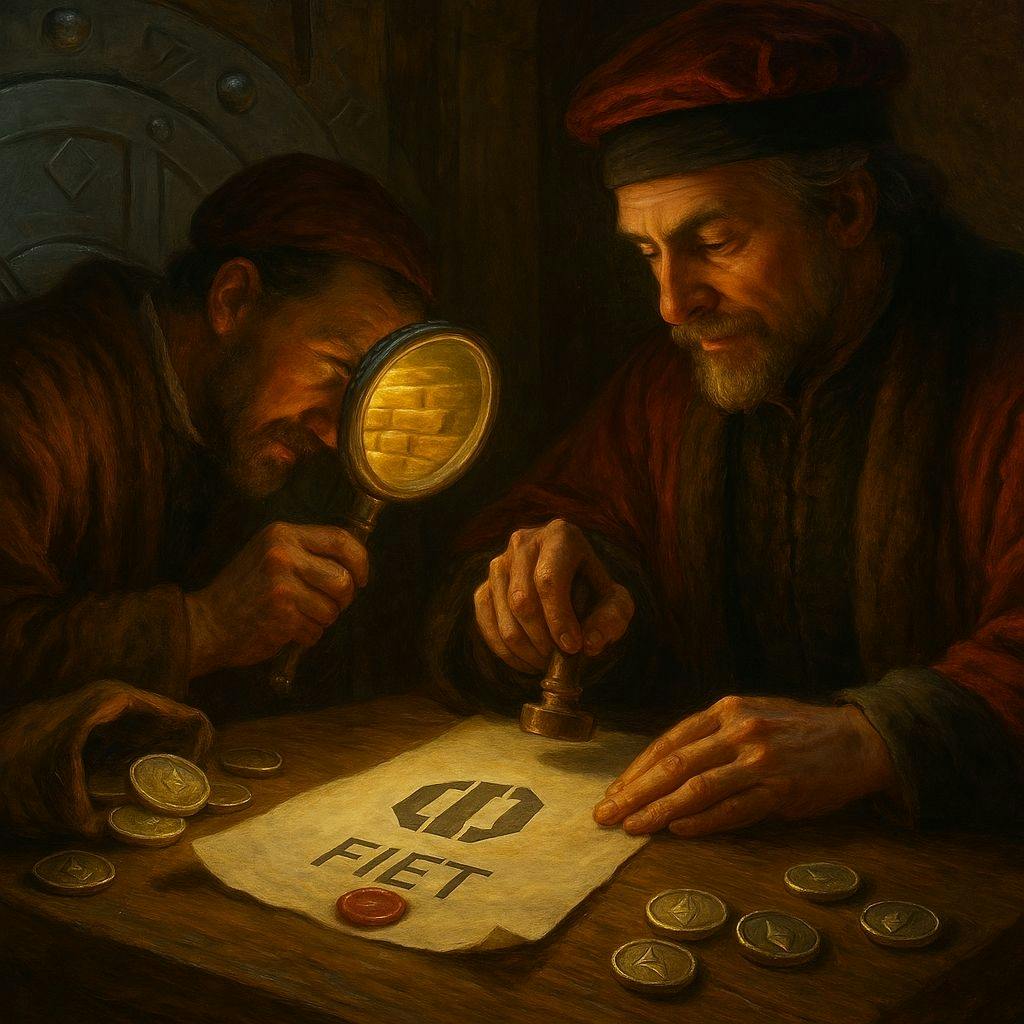In the world of crypto, zero-knowledge proofs (ZK proofs) let you prove something is true without sharing secret details. They’re like showing you know a password without saying it out loud. At Usher Labs, we use these tools in our Verity zkTLS tech to process and transform data from APIs securely and prove it’s real, all while keeping private info hidden. This helps connect sensitive data to blockchains without leaks. But not all ZK proofs are the same. There are perfect and statistical types. Let’s break them down and see how they affect working with private data.
What is Perfect Zero-Knowledge?
Perfect ZK is the strongest form. It means the proof looks exactly the same as one made without any secret info. No hints escape about hidden data, such as steps in a calculation or private inputs. Imagine hiding a gift so well that even the wrapping gives nothing away – even someone with unlimited power can’t tell.
To get perfect ZK, you might use tricks like elliptic curve math to make distributions identical. But it’s often more about careful design than speed loss (maybe just 2-3% extra work as told by the magicians on the RiscZero team). Ulrich Haböck from StarkWare talked about this – adding perfect ZK to STARKs needs precise fixes for things like query points or math splits, or small leaks can happen. It’s great for theory but adds dev complexity. Both STARKs and SNARKs can achieve this, though it’s easier in SNARKs with elliptic curve pairings.
What is Statistical Zero-Knowledge?
Statistical ZK means the proof is very close to a fake one, with only a tiny difference – like less than 1 in 2^100 chances of spotting it. That’s a number so big it’s basically impossible to tell apart. It’s like two photos that match unless you zoom in a trillion times.
For example, imagine committing to a yes/no vote with a 256-bit hash and 500 bits of randomness. The possible outputs overlap so much that distributions for yes and no look almost the same. An attacker with infinite power might guess slightly better than a coin flip, but the risk is negligible. This is sometimes called weakly statistical hiding, where infinite compute gets some info but not full certainty. This level often includes ‘computational hiding,’ where privacy holds against practical attackers, and it’s what most zkVMs provide.
Systems like Plonky2, RiscZero, Triton VM use this. They add tricks such as random padding, shifts in math domains, and methods like Fiat-Shamir to hide data.
How Do They Compare?
Perfect ZK leaks zero info, even to infinite-power attackers. Statistical is close enough (negligible risk). All keep inputs and steps private, but statistical strikes a balance: fast and practical for apps like blockchain scaling or verifiable AI. Both STARKs and SNARKs can be any of these – perfect is easier in SNARKs, but possible in STARKs too.
In privacy-focused compute, this means safe data handling without sharing. Verity’s zkTLS proves data from trusted APIs stays confidential. A recent thread on the DFINITY dev forum highlights zkTLS as a fix for Internet Computer’s data fetches – it adds ZK to hide queries and cut trust in others, great for big or hidden data.
The Impact on Compute Over Private Data
ZK proofs change how we work with private data on blockchains. With Verity, developers build verifiable pipelines from restricted sources to any chain. zkTLS acts as a shield: prove data is authentic without exposing it.
For privacy-preserving compute, statistical ZK is usually enough. No big leaks occur; proofs just confirm honest work, not secrets. This powers apps like secure AI or social features on chains like Rooch Network, where Verity embeds HTTPS clients in smart contracts.
But STARKs aren’t private by default – you need masks and randomisers, or correlations slip out. Ulrich’s “road of pain” shows implementations can miss spots, like field extensions or batch masks. RISC Zero looks solid: random padding adds entropy, domain shifts disguise traces, and FRI uses verifier randoms to limit reveals. Their whitepaper details a zk-STARK with randomised checks, focusing on integrity without data slips.
What Would It Take to Leak Data in RISC Zero zkSTARK?
In RISC Zero’s computational hiding, a leak would need spotting that difference in proofs. Take committing to a yes/no vote with a hash and 100 bits of randomness: H(random + vote). To guess the vote, you’d need to try 2^100 combos for each option. That’s possible in theory but impossible in practice – no computer can do it. Even an attacker with infinite power could break it by trying all, but bounded ones can’t.
Compare to breaking encryption:
- AES-256: Brute-force needs 2^256 key tries – way bigger than any statistical gap, like sand grain vs. beach. It would use more energy than our planet holds. AES-256 stays safe for years.
- RSA-2048: Not pure brute-force, but factoring a huge number. It gives about 112-bit security, like 2^112 efforts. RISC Zero’s shield is similar in practice – both too hard for attackers. Experts rate them secure for real use.
At Usher Labs, tools like RISC Zero make ZK practical for data security in Web3. Verity uses zkTLS to enable this, turning chains into safe data handlers.
Want to learn more or build with us? Join our Discord at https://go.usher.so/discord – let’s chat about secure crypto futures!




